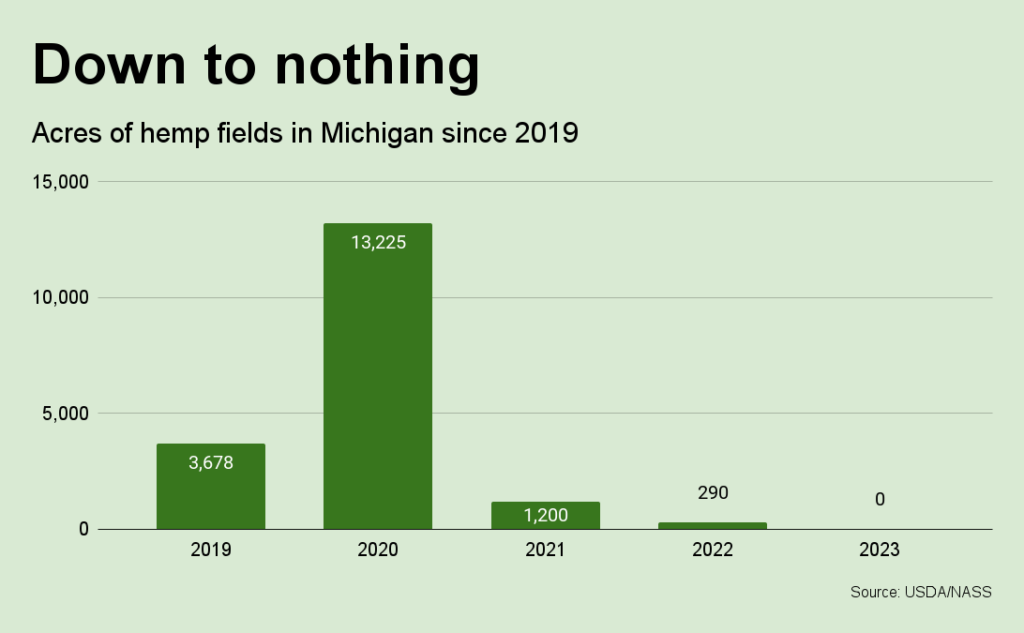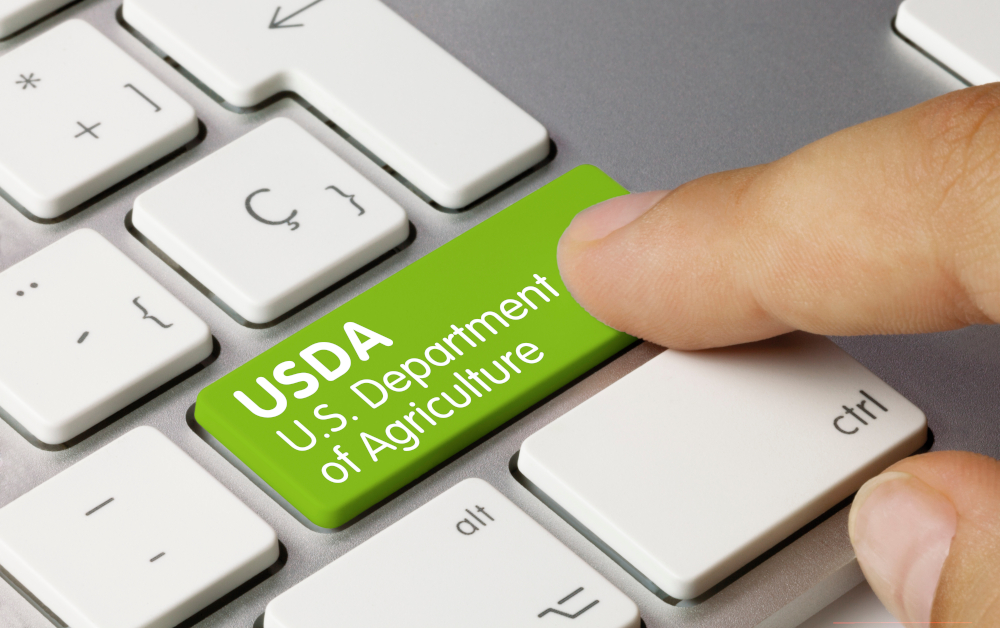Michigan has closed its industrial hemp program, leaving farmers to operate directly under the U.S. Department of Agriculture (USDA), and signaling potentially significant changes for hemp cultivators and processors in the state.
Under USDA rules, pre-harvest THC testing protocols are stricter, and all tests must be conducted at federally approved laboratories. Farmers also face heightened compliance requirements, with more detailed record-keeping and reporting obligations.
However, Blain Becktold, President of iHemp Michigan, said the change will be good for hemp growers in Michigan. That begins with costs. Michigan farmers can expect lower fees than the $1,350 they were paying for state hemp permits, which Becktold said was “certainly a hindrance to growing the industry in Michigan.”
“Now that more uses of industrial hemp products in the building and animal feed sectors are starting to emerge, this move (to USDA) may encourage farmers and processors to look again at the possibilities that industrial hemp could provide to their operations,” Becktold said.
Effective in 2025
The Michigan Department of Agriculture and Rural Development (MDARD) will end its hemp oversight at the close of 2024, with USDA protocols taking effect immediately in 2025. The decision is linked to the passage of Michigan House Bill 5977, which abolishes the state’s industrial hemp fund and transfers oversight responsibilities for hemp cultivation and regulation to the USDA.
The transition could also affect the resources and support Michigan farmers previously relied upon. The state’s program had offered localized assistance, including workshops and guidance tailored to the state’s unique agricultural environment. The move to a federal program may mean farmers lose access to such services, potentially leaving some without the same level of support for navigating regulatory challenges.
At the same time, the shift to USDA oversight brings new opportunities. Operating under a uniform federal standard could simplify compliance for businesses operating across state lines and open up broader markets for Michigan hemp products. Some producers in states that operate under USDA say the administration is simpler and that the federal program allows farmers direct access to federal resources such as crop insurance, disaster assistance, and grant programs.
Modern history
Initially, the 2014 Farm Bill authorized state agricultural departments to establish pilot programs for hemp cultivation. The 2018 Farm Bill legalized hemp nationally, granting the USDA authority to oversee hemp production. States could choose to operate their own regulatory programs, subject to USDA approval, or defer to federal management under the USDA’s standardized framework.
Michigan established its state industrial hemp program in 2019 under the authority of the MDARD. The program was initiated following the passage of the Michigan Industrial Hemp Research and Development Act, which aligned with the 2018 Farm Bill.
USDA approved the state’s plan in 2020. An update under Michigan’s Industrial Hemp Growers Act in 2021 aligned the state’s program with final federal regulations. In 2022, Gov. Gretchen Whitmer consolidated the regulation of hemp and marijuana processing, distribution, and sales under a newly named Cannabis Regulatory Agency to save money, at the time leaving licensing for hemp cultivation with MDARD.
Michigan’s hemp fortunes
While, like Michigan, many states opted to implement their hemp programs, some struggled to align their regulatory frameworks with the USDA’s strict THC testing protocols, reporting requirements, and enforcement. Several eventually reverted to USDA oversight when administration became unsustainable due to funding shortages resulting from lower-than-expected farmer participation and diminished licensing fees.
The number of growers in Michigan simply could not support a government department to oversee the hemp sector. And by taking money from growers and processors, the state failed to support the industry’s growth, according to Becktold.
Michigan’s hemp fortunes have tracked those of the industry nationwide, according to figures from the USDA’s National Agricultural Statistics Service (NASS). After reaching a peak of 13,225 acres (~5,351 hectares) planted in 2020 – spurred by the hype over CBD – fields dwindled to 290 acres (117 hectares) in 2022 after a massive crash hit that subsector. No hemp acres were reported to NASS for 2023.


